Diablo 4: Best Necromancer builds, skills, and leveling tips
Dominate the battlefield with your undead army.

Diablo 4 is an epic action-RPG that pits you, the player, against endless hordes of terrifying enemies spawned from the darkest depths of your nightmares. Even if you're playing solo, though, you don't have to play alone as the Necromancer. This macabre class gives you command over an army of the undead and possesses a diverse array of skills and abilities.
I've been playing with the Necromancer in Diablo 4 non-stop to bring you all the tips and tricks you need to master this versatile class. The Necromancer is one of the best classes in Diablo 4, but it can be overwhelming to decide how to configure your character and emerge victorious in the hunt for Lilith. Fortunately, this guide will dispel all your doubts.
I cover a lot in this guide, but I've split all the information into categories. You may not need all of this, so be sure to use the categories to find exactly what you're looking for! Let's get started.
Diablo 4 Necromancer: Overview and how to play

The Necromancer is one of five classes in Diablo 4, joined by the Barbarian, Druid, Rogue, and Sorcerer. Like the Sorcerer, the Necromancer is focused on magic-centric skills and abilities, but with a truly unique mechanic that makes the Necromancer a fantastic option for solo players.

- 5 mistakes new Diablo 4 players should avoid
- How to play Diablo 4 multiplayer co-op
- All the known bugs and issues in Diablo 4
- The full timeline and history of Diablo
While you can play the Necromancer just like the other classes, the Necromancer's greatest strengths lie in relying on their diverse array of summonable undead minions. Using the Book of the Dead (which I'll detail later), Necromancers can summon Skeleton Minions from the corpses of fallen enemies, and even eventually summon a powerful Golem ally.
These Minions deal damage independently of the Necromancer and can attract the attention (or aggro) of enemies, giving the Necromancer freedom to stay healthy and provide additional damage, support buffs, and more. For this reason, the Necromancer is an excellent class for beginners or those who want to play solo, but this class can struggle against lengthy boss battles if you're unable to replenish your Minions with fresh summons (as it relies on corpses being available).
The unique energy Necromancers have at their disposal is Essence, which is generated by killing or damaging enemies with their basic attacks. More powerful skills and abilities can cost Essence to cast, although there are exceptions to this rule. The use of Minions, which don't cost Essence at all, means that the Necromancer can instead use their valuable Essence resource on more powerful or unique abilities.
Get the Windows Central Newsletter
All the latest news, reviews, and guides for Windows and Xbox diehards.
How to play the Necromancer comes down to two main questions: Do you want to rely on your minions, and what kind of build do you want to build? The undead is the Necromancer's bread and butter, but you can optionally sacrifice the ability to summon these minions in order to buff your core character. The Necromancer also possesses several major damage archetypes with distinct differences, making it easier to plan a build than with some other classes.
Overall, though, the Necromancer is very versatile, with viable options for supporting your minions and other players, dominating the battlefield with overwhelming power, focusing on making the Necromancer themself as strong as possible, dealing lasting damage-over-time from a distance, wreaking havoc in close range combat, and more.
Diablo 4 Necromancer: Base stats

The Necromancer is more focused on magical attacks than physical attacks, so the base stats for this class are similar to that of the Sorcerer in Diablo 4. That means Intelligence is the highest and most important base stat, providing an all-around boost to skill damage, so items and gear that increase the Necromancer's Intelligence should be prioritized over other stat boosts.
Willpower is the second highest base stat, and provides an increase to the amount of Essence (the unique resource that Necromancers use to power their unique attacks and skills) generated by basic skills.
| Base stat | Effect (per stat point) |
|---|---|
| Intelligence: 10 | 0.1% boost to skill damage (unique) |
| Row 1 - Cell 0 | 0.05% boost to all element resistance |
| Willpower: 8 | 0.1% boost to resource generation (unique) |
| Row 3 - Cell 0 | 0.25% boost to Overpower damage (unique) |
| Row 4 - Cell 0 | 0.1% boost to healing received |
| Dexterity: 7 | 0.02% boost to critical strike chance (unique) |
| Row 6 - Cell 0 | 0.025% boost to dodge chance |
| Strength: 7 | 1 point increase to Armor |
While Dexterity and Strength share the same base stat for the Necromancer class, Dexterity is more useful to increase thanks to the boost to critical strike chance you gain. Strength doesn't provide a unique offensive boost for the Necromancer class like it does for other classes, and is therefore the least important of all the base stats to increase.
To summarize:
- Increase the Intelligence stat first, to boost all skill damage and make your Necromancer more deadly
- Increase the Willpower stat second, to increase the amount of Essence you generate and to increase the damage down by Overpower (this has a chance to increase your skill damage based on your Life and Fortified Life)
- Increase Dexterity third, but only prioritize this stat if your Necromancer focuses on dealing critical strike damage as often as possible
Diablo 4 Necromancer: Leveling up tips

Because the Necromancer is so versatile as a class (and because there are so many potential paths you can take), I won't outline a specific leveling build you can employ. However, I will provide some tips for how you can ensure your Necromancer grows in strength quickly and reliably. Let's get started.
- If you're playing solo, start on a lower World Tier. It can be tempting to start on a higher difficulty for the greater EXP and gold gain, but that's not always the best bet for leveling up quickly. The Necromancer is especially good at quickly wiping out large groups of weaker enemies, meaning it can often tear through enemies much faster on World Tier 1 than the 20% EXP boost of World Tier 2 can offset.
- If you're playing with a group, a higher World Tier is still viable, especially if you're planning on a support build for your Necromancer.
- For more information, be sure to check out our guide on Diablo 4 World Tiers and how to change difficulty.
- Focus on unlocking your core skills. When you're choosing how to invest your valuable Skill Points each level, it may be easy to get distracted by ranking up your existing skills, unlocking new side perks, and more, but that's not always the best way to power up. Ideally, you should have the complete foundation for your Necromancer's build by about Lv. 25, so you should focus on unlocking the core skills you want your Necromancer to have.
- Be sure to have at least one resource generating attack, although mixed builds may be able to make use of two.
- Decide early on if you're going to use your undead Minions or not (most players will), as you can also free up a skill slot in your hotbar if you choose not to.
- As you unlock new categories of skills and perks, evolve your build by carefully choosing which skills your Necromancer will have at their disposal.
- Once you have all your core skills and attacks, then you can begin investing Skill Points in augmentative perks, skill upgrades, and more.
- At Lv. 25, when you unlock the Necromancer's unique quest to obtain the Golem Minions, your build should more or less be complete and be able to simply grow more powerful with new perks.
- Use Corpse Explosion. Not every Necromancer build needs to use the Corpse Explosion ability, but if you're intent on leveling up your Necromancer as quickly as possible I highly recommend it. This satisfying skill consumes an enemy corpse and explodes it, dealing high damage to the surrounding area. Corpse Explosion can quickly and remotely wipe out huge groups of enemies and tear chunks out of a boss's health bar.
- Corpse Explosion costs no Essence to cast and has no cooldown, so it can be spammed relentlessly until all enemies are dead.
- Enemies killed by Corpse Explosion still produce a corpse, allowing you to use the skill again instantly.
- This is one of the quickest and easiest ways to farm enemies, especially at lower World Tiers
- Corpse Explosion can also fit in with a lot of Necromancer builds due to its effectiveness, so you don't have to revolve your entire build around it.
- Be mindful of skill synergies. The Necromancer's various damage archetypes can have powerful synergies that dramatically alter a build, like the Blighted Corpse Explosion augmentation that trades immediate explosive damage for Shadow damage-over-time. When deciding on a new skill or perk, consider how it may augment your existing skills.
- Make sure you have enough corpses. As a side note, corpses are a very valuable resource for Necromancers. If your build relies heavily on summoning Minions and using corpse consuming skills like Corpse Explosion, make sure you have at least a few ways of generating fresh corpses separate from just killing enemies. Attack skills like Decompose, perks like Hewed Flesh, and Minion upgrades (like for the Reaper) can all help you create new corpses.
Diablo 4 Necromancer: How to use the Book of the Dead

The Book of the Dead is only available to the Necromancer, and it's absolutely vital for customizing your character and designing your build. Unlocked at Lv. 5 (right at the beginning of the game), the Book of the Dead is how you manage all of your undead Minions, including choose the types, upgrades, and even opting to sacrifice the ability to summon specific Minion classes.
You can open the Book of the Dead at any point to mess with your Necromancer's Minions and build. Between three classes, three types per class, and three upgrades per type, there's a lot of diversity with the Necromancer's Book of the Dead. Here's a very quick rundown:
- Skeletal Warriors: Melee-focused Minions, with players able to summon four (or five Skirmishers with a specific upgrade) at a time from enemy corpses.
- Skirmishers are available at all times but are upgradeable at Lv. 5, and are well-rounded offensive melee units.
- Defenders are unlocked at Lv. 8, and are durable defensive melee units.
- Reapers are unlocked at Lv. 15, and are powerful offensive melee units with a unique attack.
- Skeletal Mages: Range-focused Minions, with players able to summon three at a time from enemy corpses.
- Shadow Mages are unlocked at Lv. 15, and deal moderate Shadow damage from a considerable distance.
- Cold Mages are unlocked at Lv. 18, and deal Cold damage from a good distance, eventually freezing enemies they target.
- Bone Mages are unlocked at Lv. 22, and deal great damage from a distance by flinging their own bodies, but do damage to themselves in the process.
- Golems: Unique, durable Minion, with players able to summon one at a time. The process for how to do so (and how to unlock them in general) is detailed below.
- Bone Golems are unlocked at Lv. 25, and are beefy melee units that attract enemy aggro to protect you.
- Blood Golems are unlocked at Lv. 28, and can heal during battle as well as absorb damage you would take.
- Iron Golems are unlocked at Lv. 32, and are powerful melee units that prioritize damage over protection.
All of these Minions are viable in their own way, but are obviously better suited to certain builds. As you level up your Necromancer, you'll have to decide which Minions you want to summon, as well as which upgrades you want to use. If you choose to build a Necromancer without any Minion summons, bear in mind that each of the three classes lets you choose a sacrifice, giving you up to three permanent buffs to your character in exchange for no Minions.
How to unlock and summon Golems

In Diablo 4, each class has a Priority Quest to unlock a unique mechanic for that class. The Necromancer's comes later than most other classes, but it is there. At Lv. 25, you will automatically begin the "Call of the Underworld" quest, which tasks you with praying at a Shrine of Rathma in Fractured Peaks, to the northwest of Kyovashad.
Once you pray at the shrine, you'll be met with the shade of Maltorius, a long-dead Necromancer that knew Rathma. Maltorius informs you that one of Rathma's greatest theories about Necromancy gave birth to Golems, and that now the gift of that knowledge is being passed on to you. In order to give to life to where there was none, though, you'll first have to collect some things.

First, you'll need to collect 12 bones from undead enemies in the immediate area. Afterward, you'll need to travel southeast (still west of Kyovashad) to a hidden cave that hides an ancient relic known as the Jar of Souls. You'll need to slay a large number of spirits to free the souls in the relic, after which Maltorius will reappear and tell you how to ask the freed souls to help in your quest.
Once you've done this, the Golems will be added to the Book of the Dead, and you'll be able to summon them. You can only have one Golem at a time, and they're not summoned via an enemy corpse. Golems can be summoned at any point, and can even revive themselves after death (following a cooldown time). However, Golems are separate from Skeletal Minions, and are not summoned via the same skill. That's right, it'll occupy a second skill slot in your hotbar if you want to have a Golem and Skeletal Minions. If you don't have a free slot in your hotbar, you'll need to use the "Skill Assignment" menu (accessed via the "Abilities" menu) to replace one of your existing skills.

If your build focuses entirely on the damage done via your Minions, this could be worth the tradeoff. Golems are extremely powerful, and can dramatically change the power level of your build. Alternatively, you can replace your Skeletal Minions with the Golem for a more focused bodyguard, or take advantage of a Golem sacrifice bonus to permanently buff your Necromancer.
Diablo 4 Necromancer: Best skills

As I've already mentioned, the Necromancer class is surprisingly versatile, with a few skill archetypes that makes it relatively easy to pick a "lane," so to speak. Once you've landed on the kind of Necromancer you want to be, you can choose the skills that align with the vision. I'll highlight some of the best overall Necromancer skills below.
You can also read our guide on every skill, attack, and ability for the Necromancer in Diablo 4. You can also read our guide on how to respec your skills in Diablo 4 if you want to change things up.
Basic, resource generation attacks
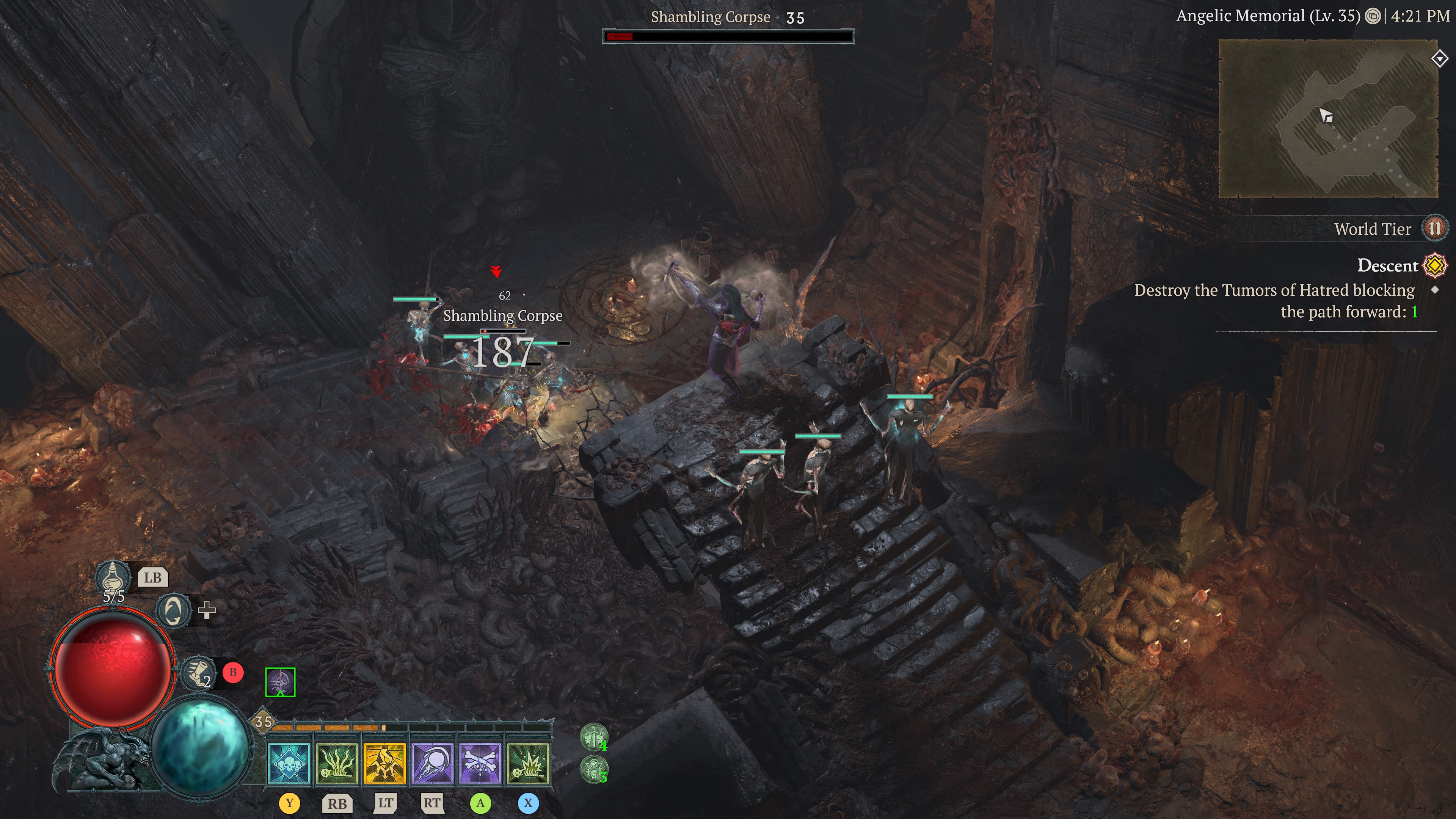
The Necromancer has four basic attacks that help generate Essence as you use them, spread across Shadow, Blood, and Bone damage. Each attack has its merits, but two in particular stand out as great starting points for any Necromancer build.
There are two Shadow basic attacks, but Decompose has an edge over Reap. While Reap is still effective, Decompose deals consistent damage over time, at fantastic range to keep your Necromancer out of danger, and more consistently creates corpses. It can also buff your Minions or apply a Slow effect to enemies with upgrades, and can be massively buffed by a Legendary Aspect that causes Decompose to chain between enemies and create more corpses.
Next is Hemorrhage, a Blood-type attack that brutally bursts the blood vessels of your enemies, dealing damage. What makes Hemorrhage such a valuable basic attack, however, is its ability to create Blood Orbs when enemies are hit, which heals you for 15% of your life when picked up. Hemorrhage can also be upgraded to Fortify your life on hits, further enhancing your Necromancer's durability. Because of this, Hemorrhage is basically the must-have basic attack for Necromancer's choosing to fight without their Minions.
Advanced resource spending attacks

The Necromancer has a solid variety of attacks that don't generate Essence (and often cost Essence), but that deal enhanced damage or have additional effects over more basic attacks. These are still mostly confined to Shadow, Blood, and Bone damage types, but also includes a handful of Corpse attacks.
If you're focusing on Shadow damage, Blight is a fantastic area-of-effect attack that deals damage on impact and deals damage over time and can be upgraded to buff your Minions and Slow your enemies. Blight pairs well with other AoE attacks like the Curses you can see below.
The Blood archetype actually has three solid skills within it, including Blood Lance, which deals reliable damage that increases depending on how many separate enemies have been hit. Blood Surge is also effective against multiple enemies and can heal and Fortify you at the same time, increasing your durability. Finally, Blood Mist can help you escape tricky situations, deals damage to nearby enemies, can heal you, and can even generate fresh corpses. The Blood type, in general, is very useful for Necromancers that aren't using Minions, but is generally great.
For the Bone type, Bone Spear is a vital attack for any Necromancer focused on high damage above all else, as it can be upgraded with a higher chance for critical strikes and can hit multiple enemies at once when its projectiles shatter on impact.
Finally, the Corpse damage type has two attacks, and both are great. Corpse Explosion is particularly awesome, as it deals high area-of-effect damage by consuming a corpse, has no cooldown, and costs no Essence. This makes it essential for any Necromancer that creates lots of corpses, doesn't have Minions to use the corpses, or just wants to deal a lot of damage at once. Corpse Tendrils is a little more niche, but is still a fantastic skill, as it doesn't consume a corpse, draws in enemies within a wide area (perfect for setting up AoE attacks), and stuns and damages those enemies. It can also Slow enemies and provide Blood Orbs for healing, making it an incredible skill that is only held back by its relatively long cooldown time.
Curses
The Necromancer has two Curse skills at its disposal, which can be very useful for providing support to other players, buffing Minions, or helping you setup for more damaging attacks. Out of the two Curses, though, one is particularly useful for the above use cases. Decrepify massively Slows enemies in a wide area and reduces their damage. It can be upgraded to potentially Stun enemies. This helps keep enemies in one place so that AoE attacks like Blight and Corpse Explosion can do their job, and can help keep your Minions alive so they can do their job.
Perks and passives
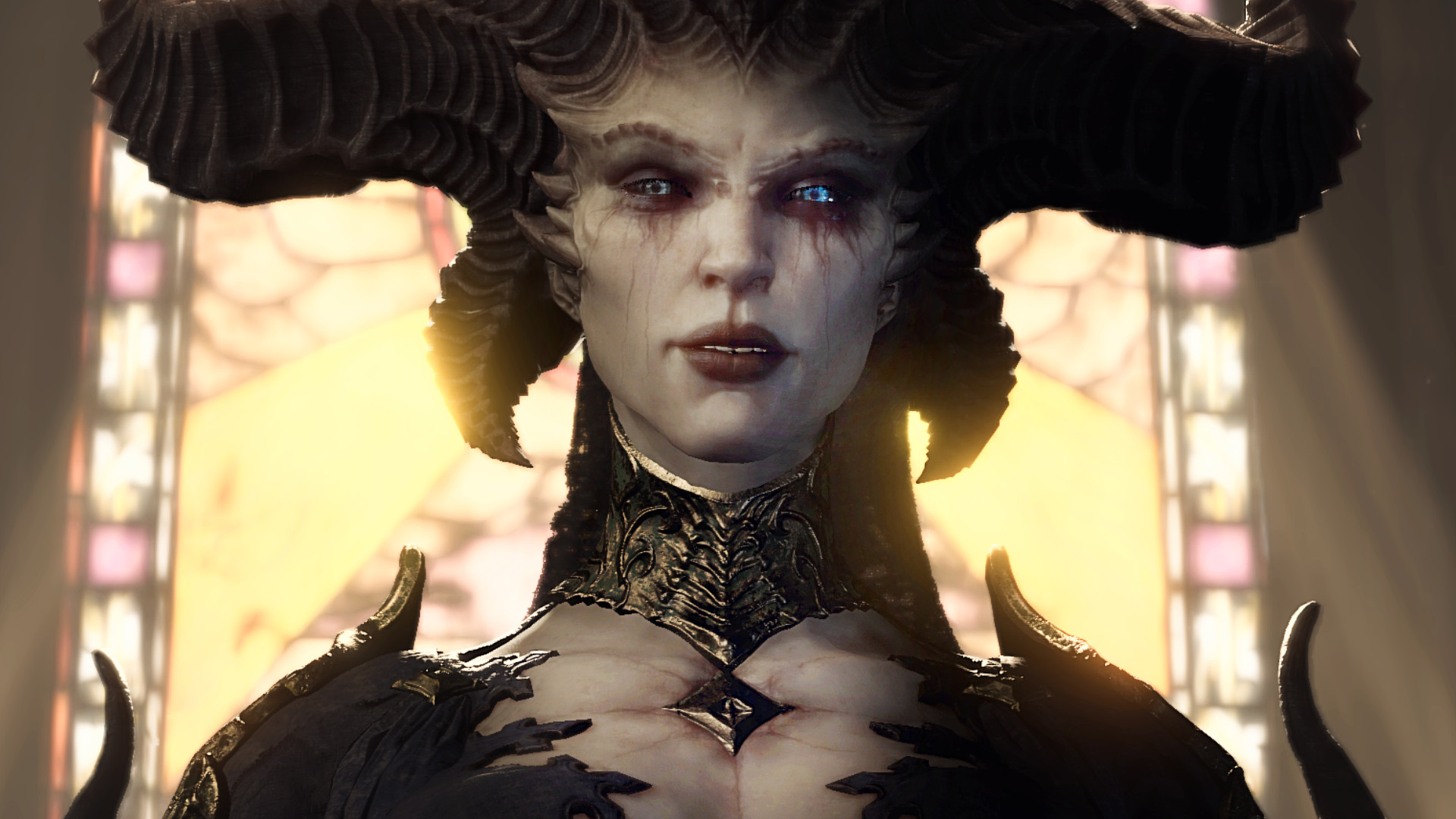
Aside from active skills and attacks, the Necromancer has access to countless perks and passive upgrades that can augment or even completely change your build's power. There are too many to cover (especially as a lot of these perks can be useful for almost any build), but I'll highlight some of the best that can be useful to specific builds or Necromancer types.
Contained within the Core Skills group (unlocked early on), the Hewed Flesh perk provides a 4% for a corpse to be created when you deal damage (8% against bosses) and can be upgraded to increase this chance. If your build relies heavily on Minions or Corpse Explosion, this perk is crucial to ensure you always have access to corpses, especially against bosses.
The three main damage archetypes (Shadow, Blood, and Bone) each also have a group of perks that are extremely helpful if your Necromancer is built around these types. Contained in the Summoning Skills group unlocked further down the skill tree, these skills start with Reaper's Pursuit for Shadow, Gruesome Mending for Blood, and Serration for Bone. The Shadow-focused perks can increase the effects done by Shadow attacks and further buff your Minions, the Blood-focused perks can increase your healing and Fortification and even heal your Minions, and the Bone-focused perks can increase the chance and damage of critical strike Bone attacks.
Finally, there are four Passive perks at the end of the Necromancer skill tree, each with a different focus: Shadow, Blood, Bone, and Minions. All of these Passives are useful, but it's important to note that you can only choose one. Choose the Passive that best suits your build. If you're extremely Minion heavy, choose Kalen's Edict. Shadow and Curse Builds should take Shadowblight. Necromancers without Minions should absolutely consider Rathma's Vigor, which increases your maximum life and can boost the damage of your Blood skills.
Ultimates
The Necromancer has three Ultimate skills, which aim to turn the tide of battle in a moment at the expense of a long cooldown time. These Ultimate skills are divided between Blood, Bone, and Minions, but I personally didn't find any of the Ultimate skills to be vital for any build. Many players will undoubtedly find use in them, but I found greater overall value in using that skill slot for another relevant attack or ability.
Diablo 4 Necromancer: Best build outlines

It can be tough to track down the best builds in Diablo 4 for every class, especially since every player is different, and no one build is going to be the very best for solo play, co-op play, and PvP. The Necromancer makes it easy to build a compelling build, though, thanks to its clearly defined damage archetypes and versatile skills. Below I'll outline three build ideas, but I won't be detailing every single aspect of the build, as part of the fun of Diablo 4 is experimenting with what works best for you.
The Darkness Is Poisonous
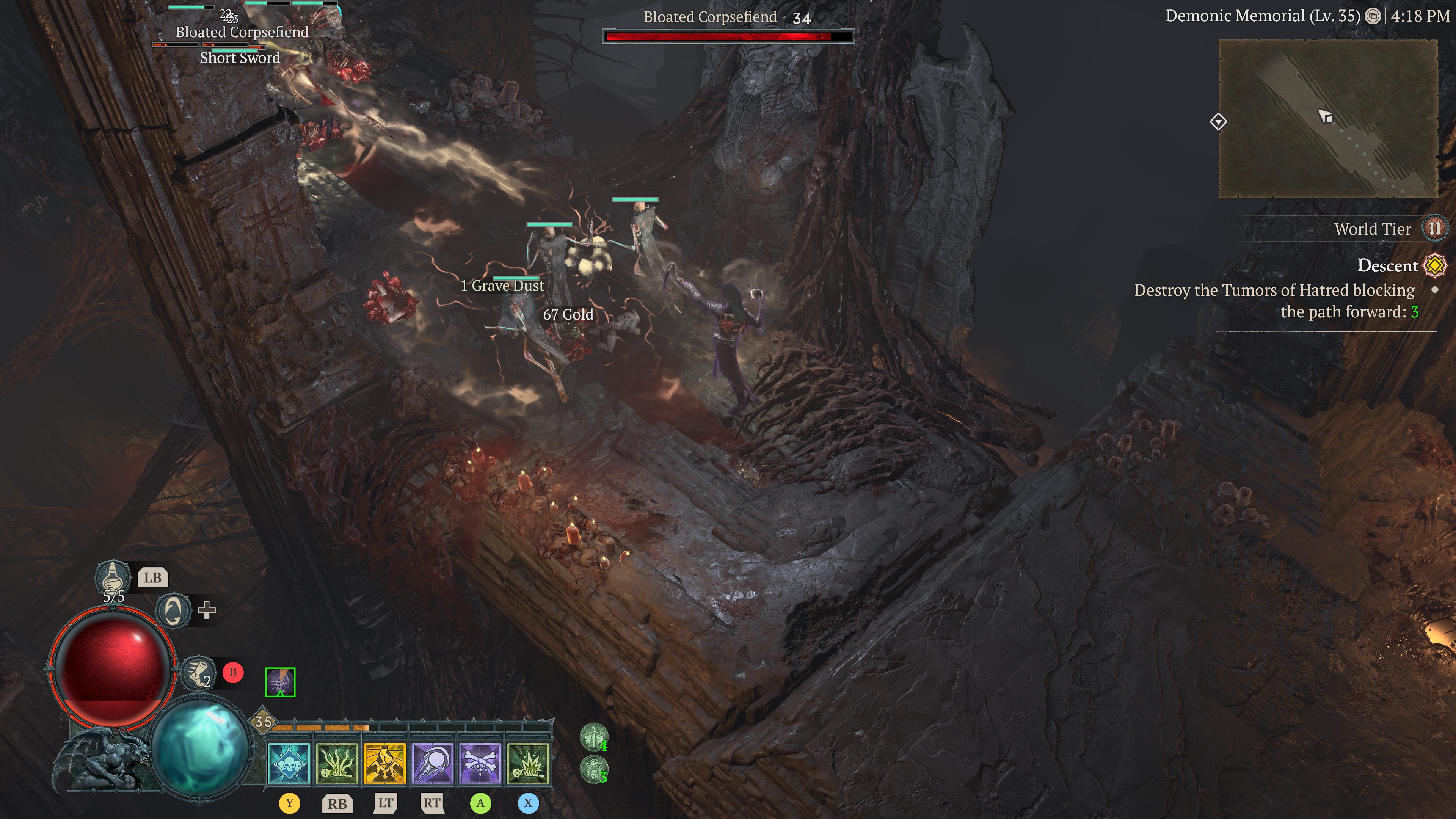
This is my personal favorite Necromancer build, and centers around a combination of area-of-effect attacks, Minions, and layered effects to deal substantial damage over time while also keeping you completely safe. This build centers around Decompose as your base attack, as it allows you to create corpses and deal damage from a very comfortable distance. If you find the right gear, Decompose becomes incredibly more effective, with chaining between multiple enemies and increased chances for corpse creation.
Blight and Decrepify lay down areas-of-effect that Slow enemies (and can even Stun and Immobilize with the right upgrades) while dealing damage over time, and also buff your Minions to deal more damage and stay alive longer. These attacks use your Essence, though, so shouldn't be spammed. Corpse Explosion is predictably useful, here, especially if you upgrade it to Blight Corpse Explosion, which trades instant explosive damage for sustained, area-of-effect Shadow damage. That's right, more darkness, more death, more layers of AoE attacks.
This build does rely on Minions to keep you alive as it doesn't provide your Necromancer with increased durability, so that will take up a skill slot for Minion summoning. After that, it comes down to personal preference — Your sixth skill slot can be whatever you like best. I chose Corpse Tendrils, as it doesn't consume a valuable corpse, deals damage to enemies in a sizeable area, and both draws in and stuns enemies within that area to keep them contained within your layered AoE attacks. It can also heal you by dropping Blood Orbs! Sure, it has a long cooldown, but it's an incredible skill when used against difficult enemies like Elites or bosses.
Using this slot to summon a Golem is also a great idea, though, as Golems can provide further protection and attack power to keep your Necromancer safe and to keep your enemies within the areas you control. Blood Surge could also be a smart choice, as its damage increases the more enemies you hit (fantastic, all your enemies are stuck in one place) and can heal and Fortify you.
Personally, I chose Reapers to create corpses and deal high melee damage, and Shadow Mages to deal Shadow damage from a distance alongside my Decompose. I also supported my Necromancer and Minions with various perks, including Hewed Flesh to help create new corpses, Grim Harvest to replenish my Essence after summoning or using Corpse Explosion, and Amplify Damage to increase damage to Cursed enemies. It's also good to include Shadow-focused perks like Reaper's Pursuit, Crippling Darkness, Gloom, and Terror to increase all the effects and damage of my Shadow attacks, and the Shadowblight passive to further increase the damage-over-time caused by my Shadow attacks and Minions.
With the above build, I've genuinely had zero issues storming through Diablo 4 enemies. This is a great build to play while solo as you're protected by your Minions and various Slow, Stun, and Immobilize effects, and is great in co-op as you're also supporting your fellow players with your AoE attacks. Its one weakness is with bosses, however, as you're pretty reliant on your Minions to protect you from damage. If your Minions fall in a lengthy boss fight, you'll have to carefully manage your corpses to ensure you can resummon them (using your sixth skill slot for a Golem can help a lot with this issue).
All My Friends Are Blood and Bone
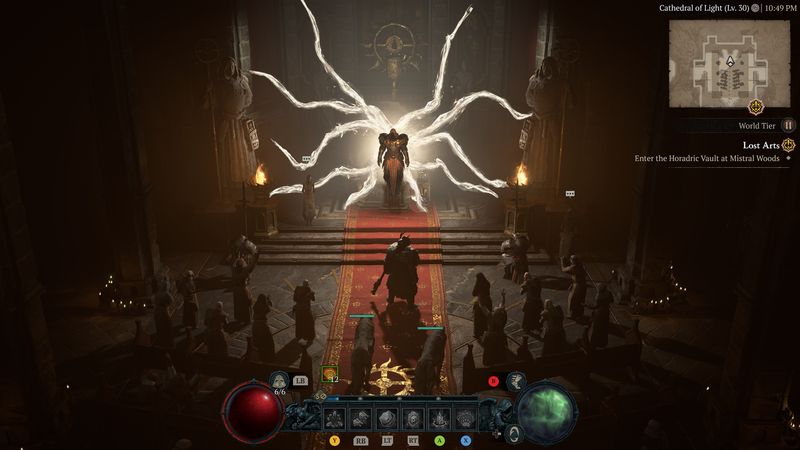
The vast majority of Necromancer builds are going to feature Minions of some kind, but it's actually viable to build a Necromancer without this undead support thanks to the permanent buffs you can gain by sacrificing them in the Book of Dead. You also free up a skill slot, which is very handy. Without your Minions, though, Shadow and Curse skills are far less useful. Instead, you'll want to focus heavily on Blood type skills, supported by Bone and even Curse attacks.
The core of this build has to be Hemorrhage, which provides a consistent way for your Necromancer to gain Blood Orbs to heal themselves. Necromancers are far from the fastest, most durable, or strongest of the Diablo 4 classes, so a way to heal is vital if you want your Necromancer to survive without the support of Minions. Blood Lance provides a consistent way to cause damage and can boost your attack speed or generate new Blood Orbs over time, while Blood Mist gives you a crucial way to escape deadly situations and heal (as it makes you Immune for 3 seconds).
Corpse Explosion is absolutely vital, as you'll need a way to consume the corpses you're no longer spending to summon Minions (and Corpse Explosion is generally a great skill for causing damage and clearing out groups of enemies). Bone Prison can help you generate Essence while also preventing your Necromancer from being overwhelmed by controlling groups of enemies, and can be upgraded to further Fortify your life and improve your durability. Alternatively, you can combine the upgraded Plague Corpse Explosion with Ghastly Bone Prison to deal massive damage to the Vulnerable enemies trapped inside.
I also recommend taking Bone Spear, which can deal substantial damage, especially with critical strikes. Beyond this, the success of this build hinges a lot on the permanent buffs you gain from sacrificing Minions and the optional perks. For example, the Stand Alone perk reduces damage taken when you don't have Minions, while sacrifice bonuses can improve your durability, increase your damage, and increase your critical strike chance and damage (perfect if you're relying on Bone Spear for big hits). A combination of Bone and Blood-specific perks can help a lot, but bear in mind that perks that benefit Minions are not useful at all and should be avoided.
Rathma's Vigor passive can help improve your overall durability and max life, and Blood perks like Gruesome Mending, Coalesced Blood, and Drain Vitality can increase your healing capabilities when at low life, improve the damage of your Blood Skills when at high life, and provide additional Fortify to keep you alive. I also recommend Spiked Armor, which can help you deal passive damage to enemies while constantly healing from your other skills.
Bones, Bones, Bones... Bones

Want to deal an absurd amount of damage with the Necromancer? You can certainly do that, and it all hinges around the Bone Spear attack. More specifically, you'll want the upgraded Paranormal Bone Spear, which has an increased critical strike chance and can produce additional projectiles. The Bone Spear can regularly cause massive damage against enemies, so the rest of this build focuses on setting up Bone Spear for success. This build also relies on high Dexterity, as that stat increases the chance of landing a critical strike and dodging incoming damage, so focus on modifiers and gear that increase your Dexterity stat.
For this build, it's all about balancing your ability to survive, your ability to cause damage with or without Essence, and the chance of landing consistent critical strikes with the Bone Spear. This build is more of a late-game setup, though, as its high power ceiling relies on making use of Legendary Aspects to get the most out of its skills and abilities, like the Splintering Aspect (found on gear) that makes every enemy after the first hit with the Bone Spear Vulnerable (and increases the damage done by Bone Shards from the Bone Spear to Vulnerable enemies).
The basic loop, though, is to cycle between the Bone Spear for critical strikes when you have Essence and Corpse Explosion to deal AoE damage and replenish your Essence when you run out. You do this with a variety of perks that help support the cycle — Hewed Flesh increases your chances of creating corpses on the battlefield, Grim Harvest provides Essence whenever you consume a corpse with Corpse Explosion, and Unliving Energy increases your base Essence.
Then, you'll want to increase the max damage you can deal with Bone Spear with skills like Imperfectly Balanced. This provides a damage boost in exchange for higher Essence costs. These four Bone perks increase your critical strike chance, increase your damage after critically striking, increase your damage to Vulnerable enemies, and increases your damage the higher Essence you have: Serration, Compound Fracture, Evulsion, and Ossified.
As for your other skill slots, Ghastly Bone Prison can help you control crowds of enemies and create Vulnerable enemies that can be ripped apart by your Bone Spear. Blood Mist can help you heal, evade damage (as this build doesn't feature a ton of ways to heal or Fortify), and create new corpses. Meanwhile, Bone Splinters can be your base attack, as it also benefits from the Bone-focused perks you choose to support Bone Spear.
As for your Minions, it comes down to personal preference. You can sacrifice Skeletal Skirmishers, Cold Mages, and Iron Golem to increase your critical strike chance, critical strike damage, and damage to Vulnerable enemies. However, you'll be left without the protection of your Minions (you could use your sixth slot for another skill like Corpse Tendrils for better crowd control, though). Alternatively, you can use Reapers to provide protection and automatic damage as well as provide new corpses for you, and Bone Mages to deal high Bone damage.
Diablo 4 Necromancer: Best gear and gems
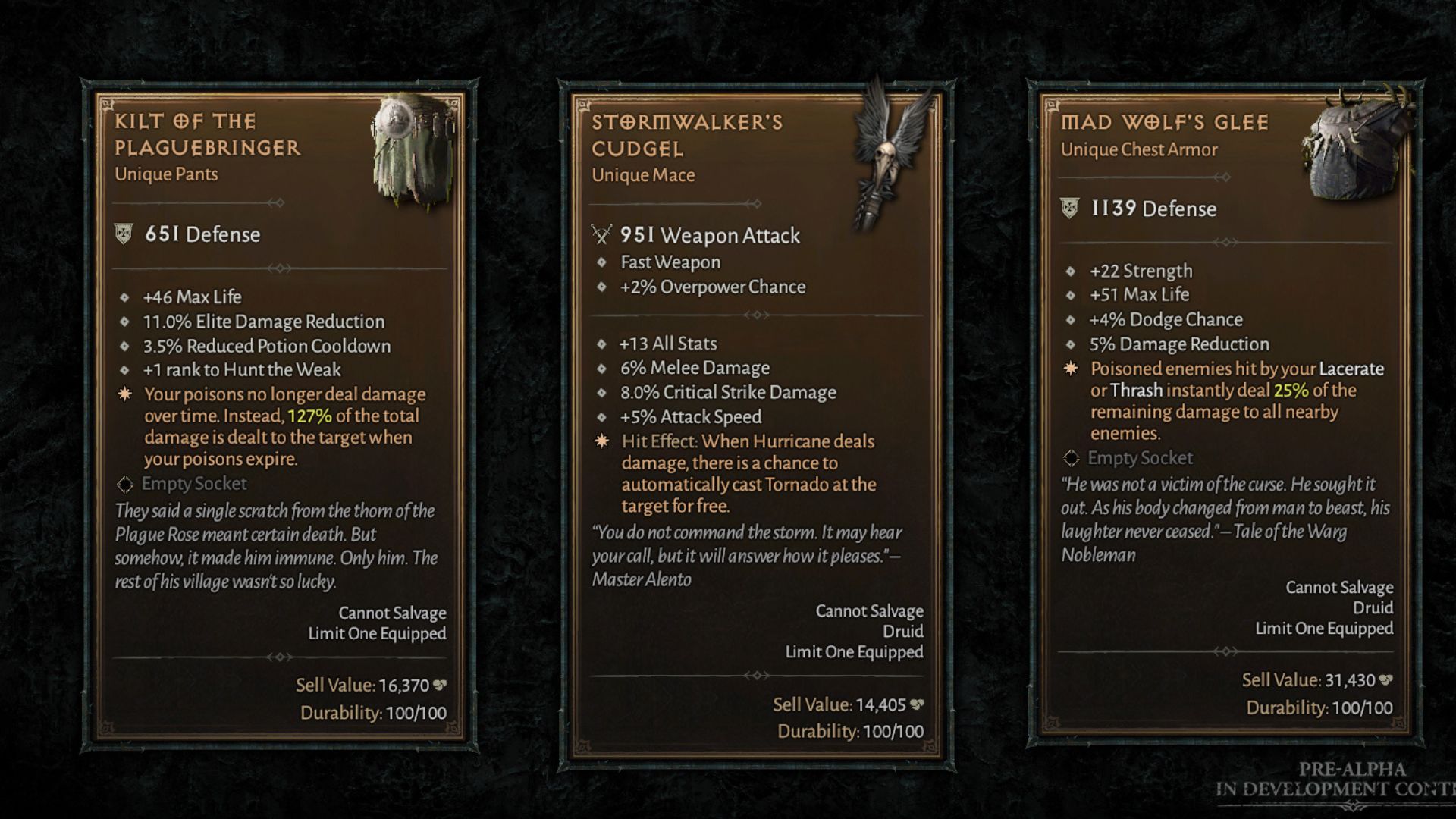
If you want to take your Necromancer to the next level, you'll need to support their build with the best gear and gems. Diablo 4 is filled with countless ways to augment every class with unique enhancements and abilities even after you've invested all your skill points, and it can transform your build into an unstoppable powerhouse (the Bone Spear build I detailed above is a great example of this).
You can read our list of every Legendary Aspect in Diablo 4 for details on all the various gear effects you can find with Legendary Gear and the Codex of Power (including helpful info for the Necromancer), and you can also check out our guide on gems in Diablo 4 and how to use them for a breakdown on these valuable, often overlooked enhancers.
What's most effective for your Necromancer often depends on your build. For example, critical strike Bone Spear builds should use Emeralds with weapons to increase critical strike damage to Vulnerable enemies, and Aspects like Aspect of Exposed Flesh, Aspect of Serration, Aspect of Torment, and Splintering Aspect. Shadow-based builds benefit Amethysts in the weapons to increase damage-over-time and Aspects like Aspect of Decay, Aspect of the Void, Blighted Aspect, Rotting Aspect, and Viscous Aspect.
Gems that increase your damage reduction or healing abilities when socketed in armor and jewelry is also a great idea for basically any Necromancer build, seeing as this class isn't known for its durability.
Countless ways to play

I have loved my time with the Necromancer in Diablo 4, especially since I can see all the possibilities available to players with this class. Personally, I'm a huge fan of Shadow, Curses, and Minions to control the battlefield and keep myself out of danger, but I can certainly see the appeal of more aggressive, DPS-focused builds or those that center around keeping your Necromancer alive no matter what.
It's hard to go wrong with the Necromancer, honestly, but having a firm plan from the beginning of what direction you want to take your Necromancer helps avoid the leveling-up difficulties from Lv. 20-30 and Lv. 50 and beyond. Once you start finding Legendary gear and collecting Legendary Aspects, you can further elevate your Necromancer until nothing can stop them. Just pick a direction you want to go and see what works. There's no wrong way to play, as long as you're having fun.
Diablo 4 is now available for Xbox Series X|S, Xbox One, Windows PC, and PlayStation. It's already among the best Xbox games of the year, with dozens of hours of content and endless replayability available to players. Join the legions of demon slayers in Sanctuary today, and take on Lilith, the Daughter of Hatred.
Diablo IV
The legendary franchise is back with an all-new, gore-tastic campaign and countless hours of epic content, and it's the best way to begin your Diablo journey. Buy it today, and walk the path of the Necromancer.
Buy from: Microsoft (Xbox, Standard) | Microsoft (Xbox, Deluxe) | Microsoft (Xbox, Ultimate)

Zachary Boddy (They / Them) is a Staff Writer for Windows Central, primarily focused on covering the latest news in tech and gaming, the best Xbox and PC games, and the most interesting Windows and Xbox hardware. They have been gaming and writing for most of their life starting with the original Xbox, and started out as a freelancer for Windows Central and its sister sites in 2019. Now a full-fledged Staff Writer, Zachary has expanded from only writing about all things Minecraft to covering practically everything on which Windows Central is an expert, especially when it comes to Microsoft. You can find Zachary on Twitter @BoddyZachary.

